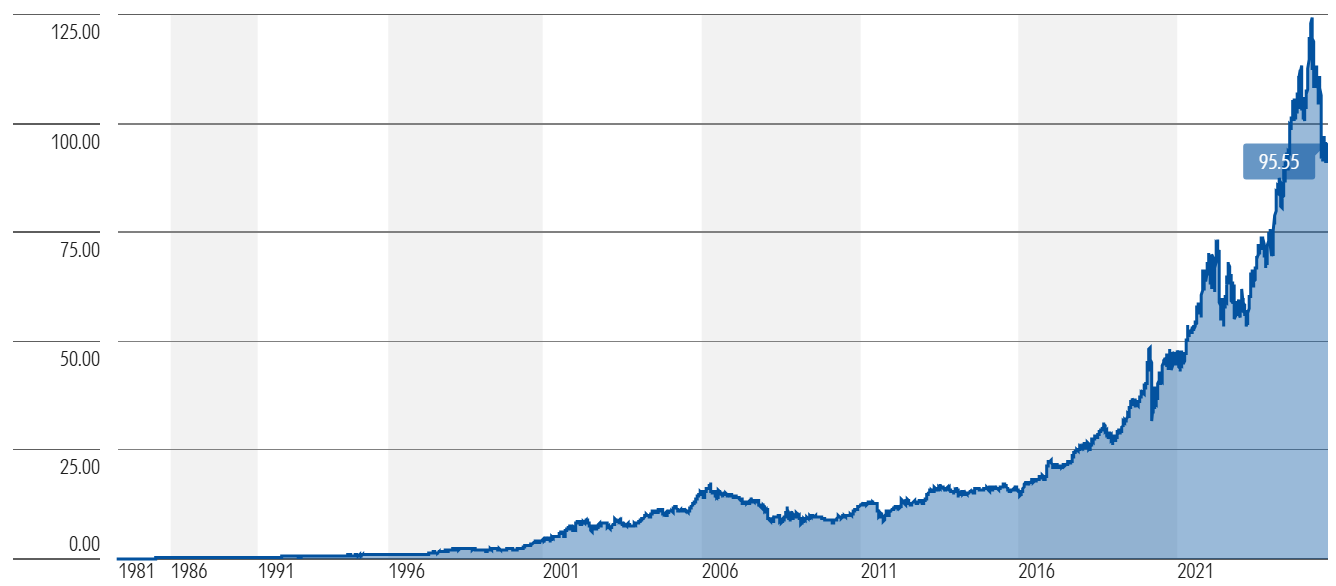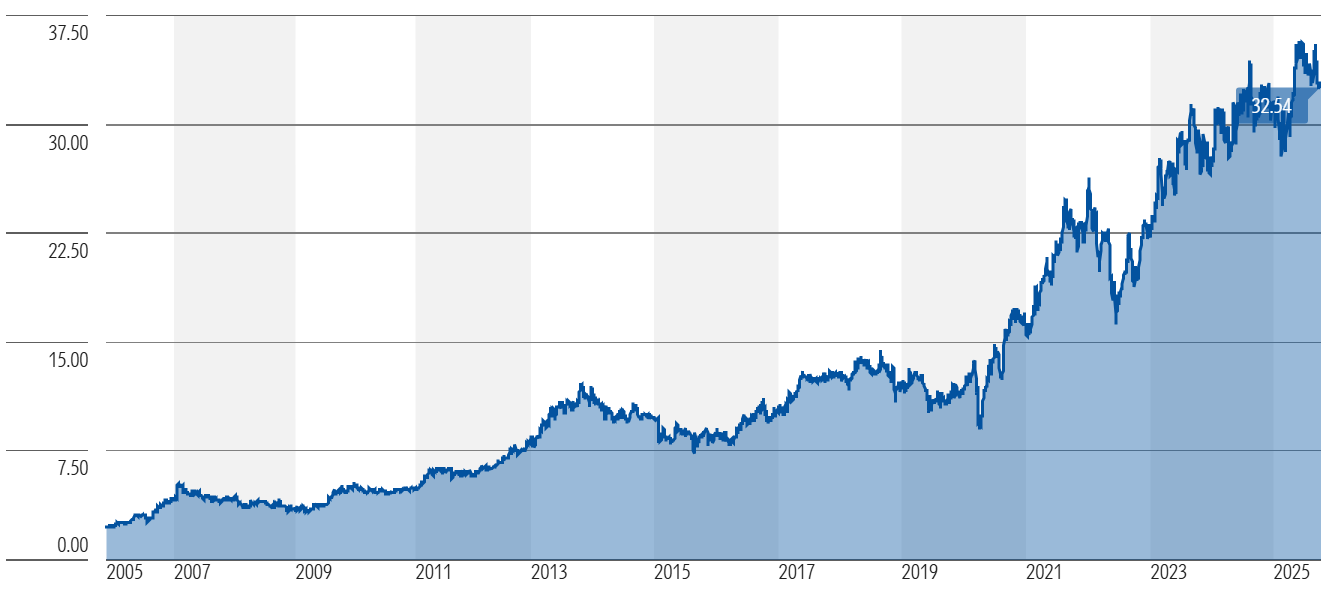Recently, I listened to a podcast interview with a guy who’s owned seven, 100-baggers. For those unfamiliar with the term ‘baggers’, it means how many times an investment has multiplied in value relative to its original purchase price. In this case, the investor bought shares which had increased by 100x or more.
That’s an extraordinary feat. Owning a single 100 bagger can change your life; owning several of them would transform your life.
He bought Amazon in 1997 and Nvidia in 2005, both at a cost-adjusted price of 16 cents. He still owns them and they’re up 1,380x and 1,159x respectively. In other words, US$10,000 invested at that original price would have turned into $13.8 million in Amazon stock and $11.6 million in Nvidia.
His other 100 baggers include Netflix, Booking Holdings, Intuitive Surgery, Mercado Libre, and Telsa.
The man who did this is David Gardner, the cofounder of the Motley Fool investment newsletter. Recently, he appeared on the ‘We Study Billionaires’ podcast to promote his new book, Rule Breaker Investing.
So, how did he manage to buy and hold so many high-flying stocks? As the name of his book implies, he did it by breaking conventional investment rules.
For instance, one of Warren Buffett’s famous quotes is: “The first rule of an investment is don’t lose [money]. And the second rule of an investment is don’t forget the first rule.”
Gardner junked that rule. He’s not afraid to lose money; in fact, he says it’s part of playing the investing game.
Gardner views investing like venture capital: if you invest in 10 stocks, there are bound to be some losers, but if you own big winners and hold onto them, the winners can lead to solid, if not spectacular returns.
“One of my big themes is losing to win. I think you have to lose to win in this world,” he says.
Gardner strayed from another conventional investment rule – don’t buy stocks that have gone up a lot in price. Instead, one of his tenets is to only buy companies which have had “stellar price appreciation.”
Gardner also ignored the commonly held maxim to not overpay for stocks. Conversely, he looks for companies which are broadly perceived to be overvalued.
The secret sauce to his investing though is to buy stocks that are first movers and leaders in important emerging industries. Gardner doesn’t want to own the second biggest player; he only wants the largest. In fact, he wants a leader that has little to no competition, and where it’s likely to remain that way.
He cites the example of Coke and Pepsi. Gardner steers clear of companies which have Pepsi-like rivals. He prefers owning businesses where there’s “blue ocean” ahead and no other companies around to crimp returns.
It isn’t for everyone
Gardner’s strategy means correctly identifying an important emerging industry. It means identifying the biggest player in that industry, and that they’ll remain the biggest player. It means being unafraid to pay up for a stock, say at a 50x or 100x price-to-earnings ratio. It also means being unafraid of purchasing a company that may have gone up 500% in the past year.
I’m not sure about you but I can’t bring myself to pay up for stocks, even high growth ones. And significant recent price appreciation is more of a red flag than a green one for me.
You’d also have to have a lot of fortitude to hold onto stocks as long as Gardner has. Think about how large Amazon and Nvidia have become as part of his portfolio. 99% perhaps? There aren’t many investors that could handle this amount of portfolio concentration and not be tempted to sell some stock along the way.
In other words, Gardner’s strategy is unique and isn’t for everyone.
Another approach
There are lots of different ways to make money. One approach that I like is to buy stocks that are consolidators of fragmented industries.
Say there are 100 companies that each have 1% share in an industry, and three of those companies manage to grab 75% share between them - that can prove enormously profitable for the consolidators. Increased scale can bring brand recognition and significant revenue and cost synergies via acquisitions.
There are many examples of this strategy being successfully applied both in Australia and overseas.
Here, the consolidation of the funeral industry is one example. Funerals leader, InvoCare, had stellar returns until it was taken private by Bain in 2023. The other key consolidator, Propel Funerals, remains listed.
Another example of consolidating a fragmented industry is insurance brokerage. There are many things to like about these brokers. Insurance is a relatively low-growth industry which limits competition. The insurance needs for a business can be complex and bespoke, and that makes relationships important and customers sticky. And since every business needs insurance, the brokerage business is resilient even in times of economic distress.
The kicker is that insurance brokerage both in Australia and the US was highly fragmented 20 years ago. That’s gradually changed though there is still more consolidation to go.
So far, it’s been enormously fruitful for those companies doing the consolidating. In the US, Marsh and McLennan, Arthur J. Gallagher, and Brown & Brown have achieved brilliant returns over decades. In Australia, AUB has crushed the index over the past decade.
Recently, I was doing a deep drive into these brokers in the US and here; specifically looking at Brown & Brown and AUB as investment opportunities. Brown & Brown had piqued my interest as it’s share price had dipped and it’s now priced at less than 20 forward earnings – not cheap but it hasn’t traded at these levels for a long time.

Brown & Brown. Source: Morningstar
The company’s return on equity (ROE) has declined to 11% over the past year, though has averaged 14% over five years, and I expect it to get back towards that level in future. It pays out little in dividends so if it can hit that ROE and maintain it, I think total returns of 13-15% per annum are possible.
AUB also has an ROE of 11% and I don’t expect it to deviate much from that in future. The big difference between Brown & Brown and AUB is that the latter has a much higher dividend payout ratio, at about 55% of earnings.

AUB. Source: Morningstar
Most investors, at least in Australia, would prefer a dividend paying stock like AUB to one that doesn’t pay dividends, like Brown & Brown - but I don’t. The reason is that my investment goal isn’t immediate income; it’s to achieve the highest, risk-adjusted return possible.
If that’s the goal, then buying the non-dividend paying stock makes more sense. If Brown & Brown can achieve an average ROE of 14% per annum (p.a.) over the next decade, then all else being equal, total returns should be close to 14% p.a.
AUB’s returns aren’t likely to get near that, not only because of a lower assumed future ROE (11%) but principally because it pays out over half its earnings as dividends. Doing this limits the compounding of its equity and caps total returns. Because of this, my forecasts for total returns for AUB are 8-10% p.a. over the next 10 years. That’s not shabby, though I think Brown & Brown offers better prospects.
Steering clear of dividend stocks
It struck me while investigating the insurance brokers that I actively look for stocks which pay little or no dividends. That's because the maths suggests that dividends can limit long-term wealth creation.
In this regard, David Gardner and I are alike: we’re both long-term investors who pursue capital appreciation rather than income.
Don't get me wrong - dividends have a place, especially for those who need income to live off, or to supplement their wages.
But if you're searching for 'muti-baggers' like Gardner and I, then it's best to pass on dividend stocks.
James Gruber is Editor of Firstlinks.